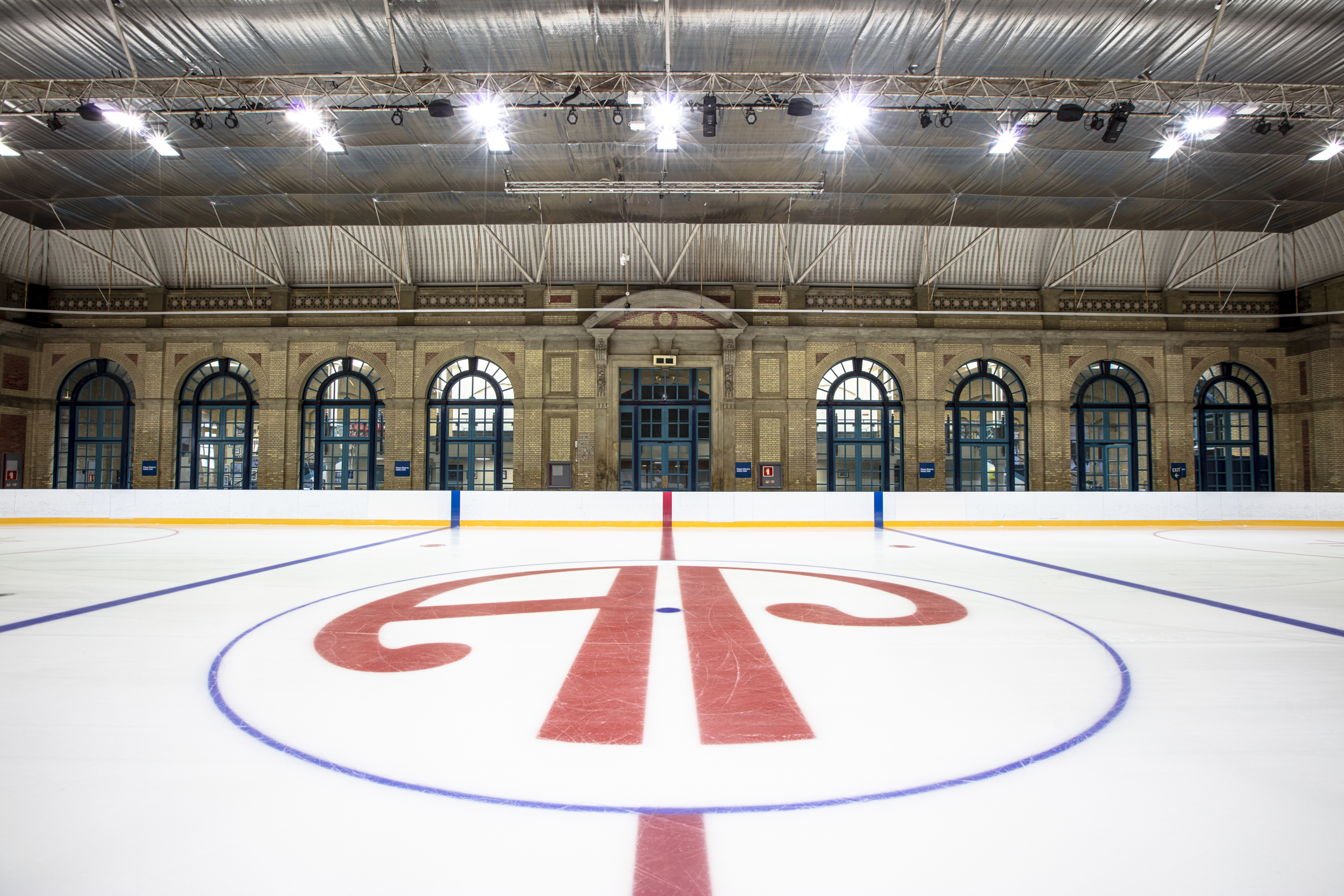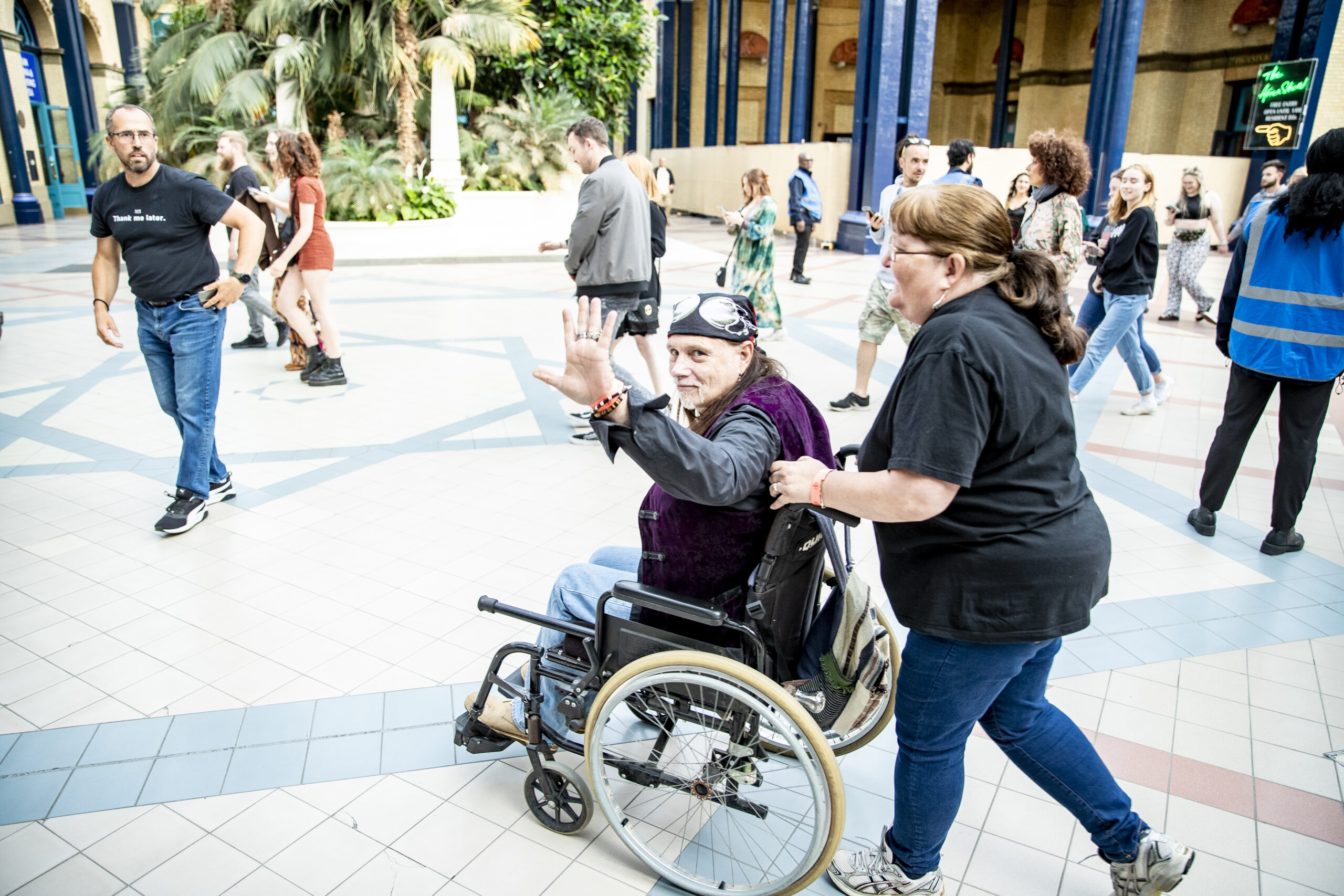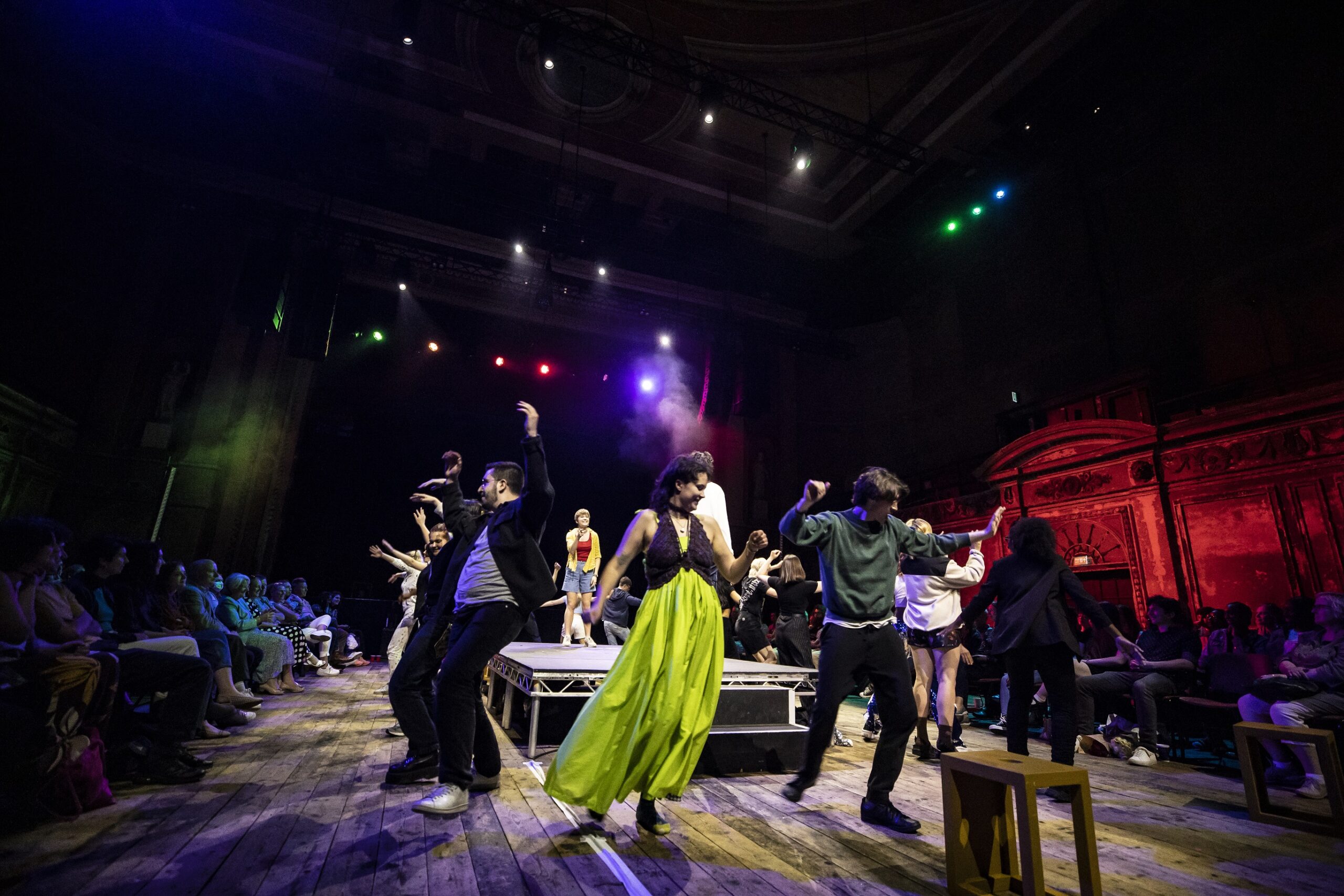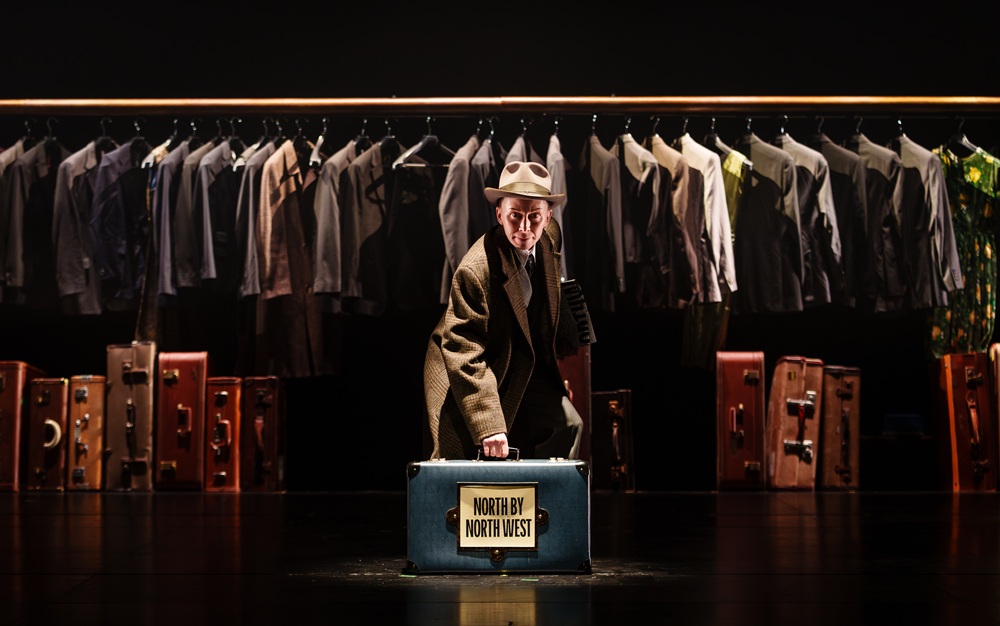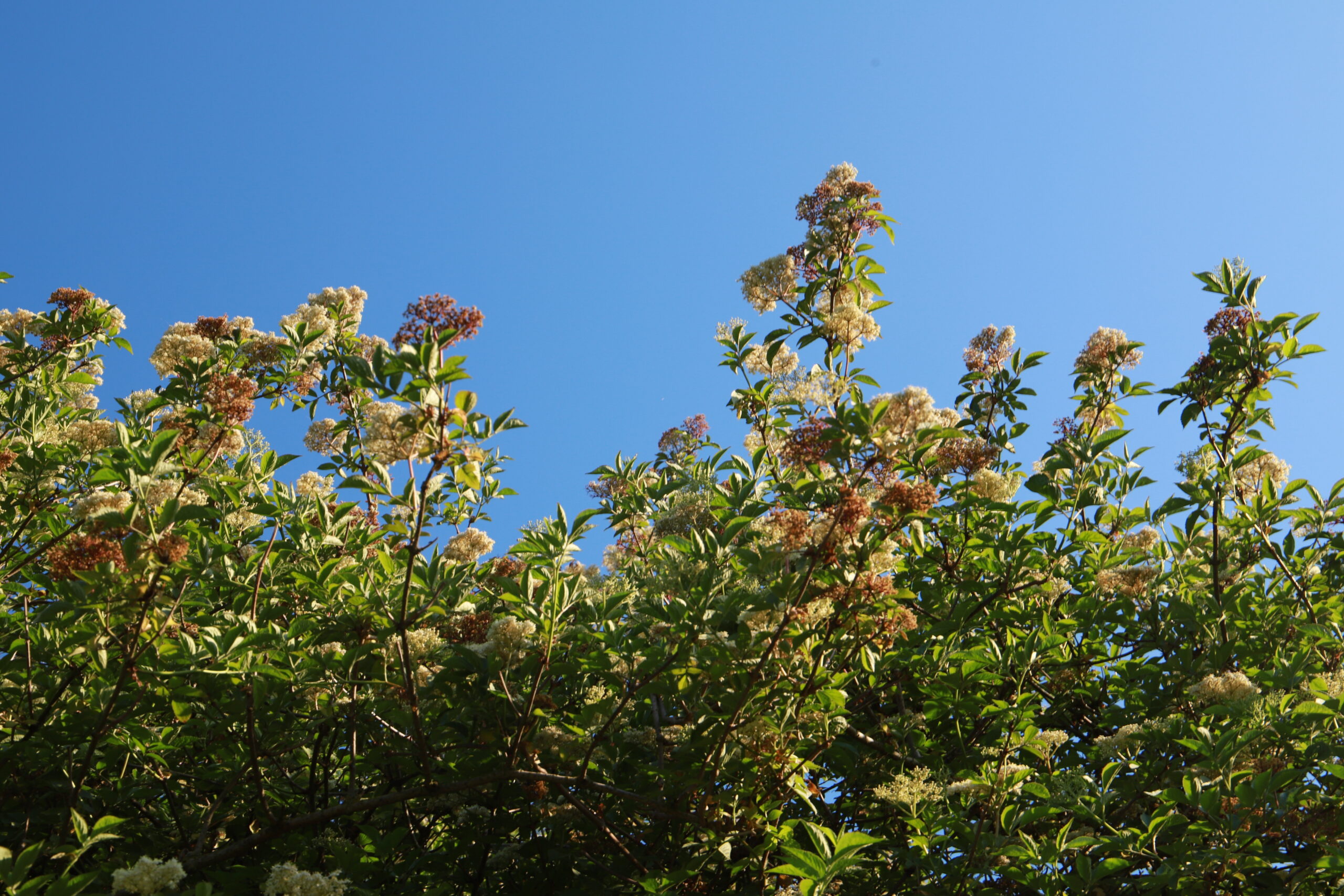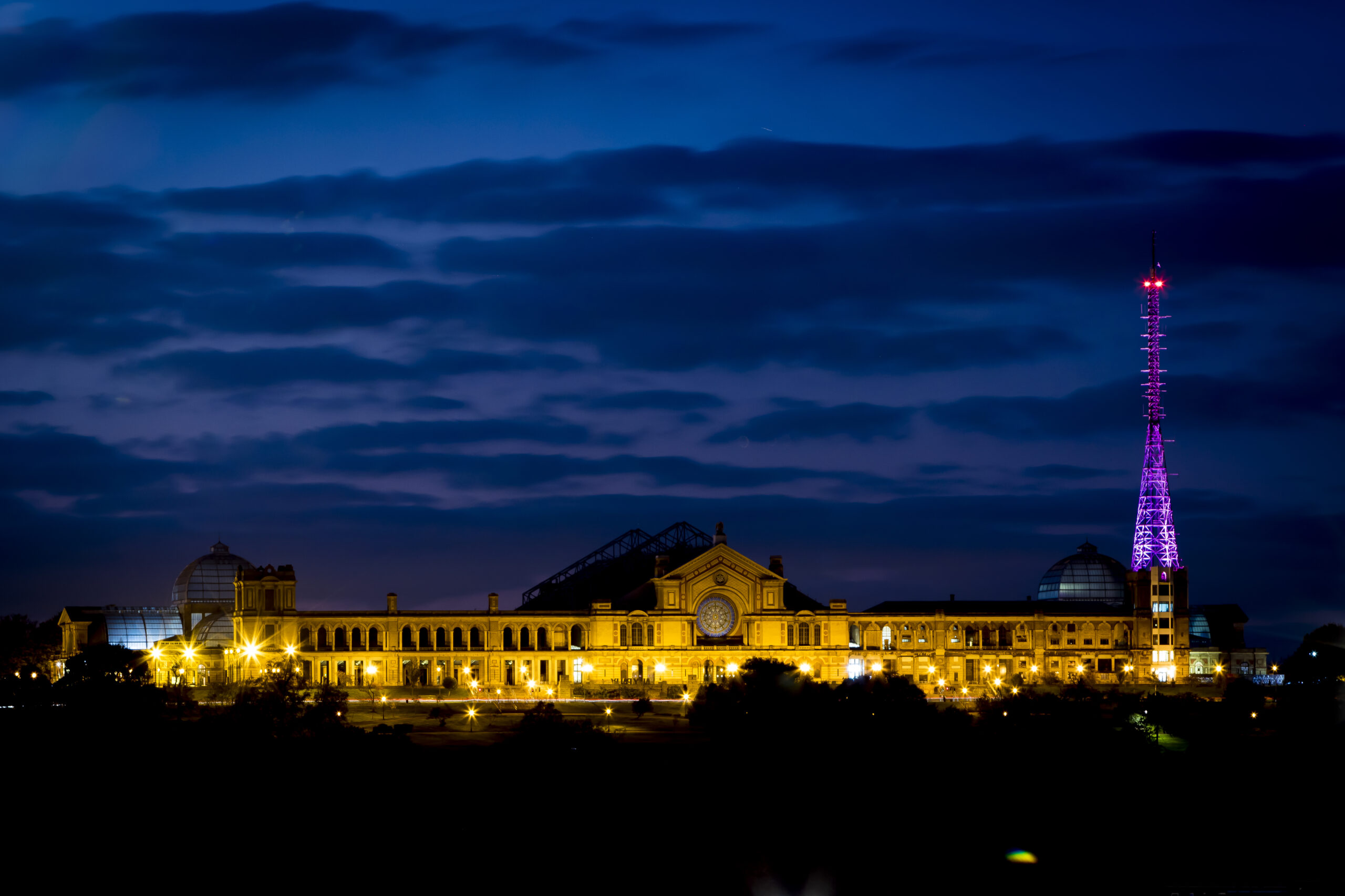15 October, 2020 is dedicated to #MuseumPassion during which BBC Arts is running a series of programmes that aim to bring the UK’s fantastic museums to a global audience. Archive volunteer Pat Brearey reflects on the history and stories of the ‘living museum’ here at the Park and Palace.
Although not built as a museum, the Palace throughout its history has housed exhibitions, including those of historical, scientific and artistic interest. The Victorians would visit the exhibition department in the east of the building, perhaps to see objects from far away countries and the latest scientific inventions; and perhaps wander through to the picture gallery nearby. In the 1920s and 1930s the Palace was host to the North London Exhibition. It could be said that the building and park themselves are living museums, reflecting their rich history. While the Palace and Park share a common history, areas of both have their own stories to tell.
The south-east of the building, facing out to the south terrace with its view over London, originally housed dining rooms. It was here that the BBC chose to take a lease to develop television and then broadcast in 1936 the world’s first regular high-definition television programmes. The transmission mast can still be seen, rising into the sky. There were originally two television Studios, both in that area, known as Studio A and Studio B.

The Theatre is in the north-east of the building. Originally designated for opera and drama and specialising in pantomimes, it also embraced spectacle and variety. It may be the only room in the Palace that has retained its original name. It is certainly a surviving part of the 1875 building and contains Victorian stage machinery. Following its Victorian years, it gradually became an early cinema (it still has an early projection box) and sometimes housed meetings, some attended by Suffragettes. During WWI an internee orchestra gave concerts to fellow internees. In 1922 it resumed as a theatre, a venue for several genres including ‘concert parties’.

During the time of the BBC’s tenure, the BBC’s and the Theatre’s journeys blended because the BBC’s lease also covered the Theatre. Between 1936 and 1939 discussions took place for the Theatre to become another BBC Studio, possibly to be called Studio C. The Palace has recently been fortunate to see archive items relating to this. Detailed plans show what was proposed at various stages for the Theatre. By 1938/9 it appears the idea was for five performance stages in the Theatre including one on the actual stage; and a control area in the centre of the north wall from which they could be seen. However it appears this didn’t happen, perhaps because of the Second World War. The BBC left the Palace in the 1980s.
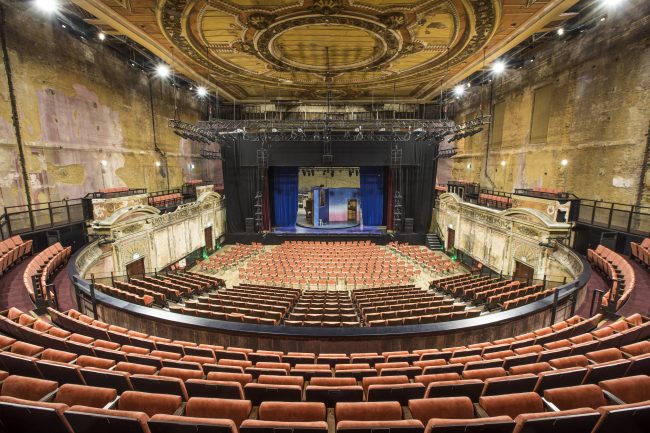
Alexandra Palace’s long and varied history generated different kinds of items, for example memorabilia, ephemera and formal documents. An interesting aspect of this is that those currently known about are located in various repositories and personal collections. Research about the Theatre by some members of the Friends of the Alexandra Palace Theatre was able to locate in 2012, courtesy of the Alexandra Palace Television Society, some informative written documents relating to the 1930s proposed use of the Theatre as a television studio.
Some Alexandra Palace staff and volunteers have also been busy, locating, documenting and interpreting items relevant to the Palace and Park’s history. It was through this work that the plans relating to the 1930s proposed use of the Theatre were located, thus also helping to join up the dots in understanding the proposed use of the Theatre by the BBC.
And an interesting and lovely reunion of the BBC and the Theatre has happened in recent years, with a BBC Prom in the Theatre in 2018 and concerts by and rehearsals of the BBC Concert Orchestra there since.
You can discover much more about the history of the Park and Palace via our archive on Google Arts & Culture
